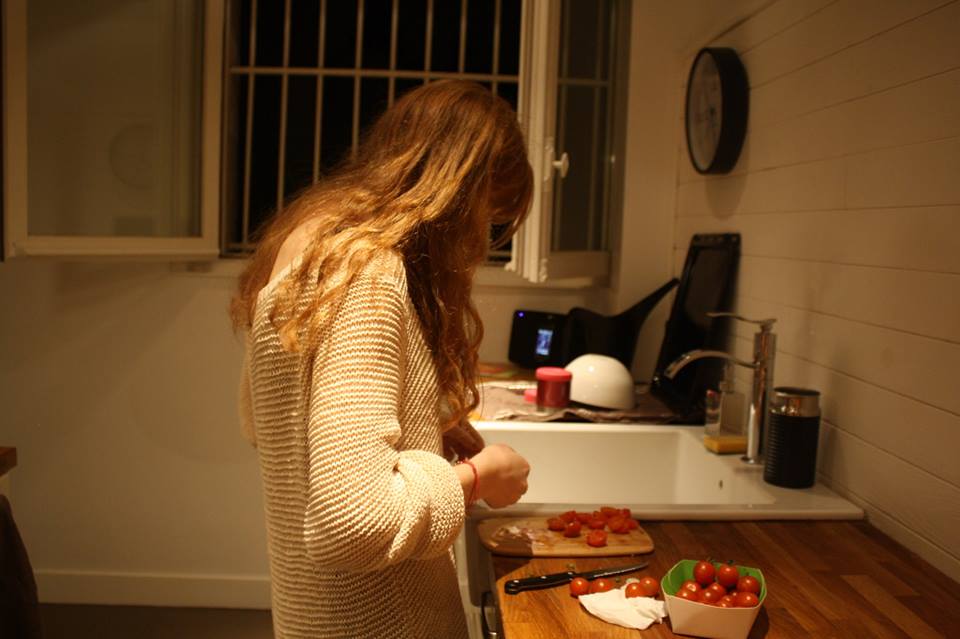FOOD GLORIOUS FOOD
This blog series is part of a larger initiative started by Olivia Jones, fall 2017 marketing intern. “The Collaborative Kitchen” is a site that welcomes all food lovers to explore ramblings, reflections, and delicious and easy original recipes. The goal of this blog series is to share Olivia’s passion for food in posts that are both thought-provoking and fun—to educate, create, and promote a positive food narrative around healthy habits, collaborative cooking, and meaningful meals.
Happy World Food Day! It’s only fitting that today’s delicious holiday coincides with The Collaborative Kitchen’s inaugural post. Today we’re celebrating food in all forms, picked fresh or prepared by hands all over the world. In line with this positive narrative, let’s do some diving in and debunking.
I’ve been obsessed with food my whole life, and by default, it’s almost always on my mind. After 21 years of this madness, you’d think I’d be a grub guru. The truth is, the more I think I know, the more I am surprised and enlightened by what I do not know. My inner-database is dynamic and constantly updating as I learn more about nutrition through media, classes, and shared experiences.
One thing I do know, however, is that food is a good thing.

Groundbreaking news, I know. But it’s something that people so often forget in a culture that praises certain foods and demonizes others. From internet ads that promise perfection by staying away from “fattening foods,” to the constant media bombardment of food-shaming messages, it seems as though the only remaining “healthy” options are kale and protein powder.
But before you toss out your bread and butter, re-evaluate the source. More often than not, these scare tactics are used to sell. It’s crucial to break down these meal myths. Everyone’s seen the classic commercial where we have a hungry person (usually a woman) trying to land on a snack, facing the token tradeoff of some delectable sweet versus the “healthier” option.
This type of ad is a textbook example of the binary I’m referring to when I say that certain foods are “demonized,” while others are praised. But in swearing off foods, we are both underestimating the human body and limiting ourselves from the simple experience of a tasty treat.
The point is—in its natural state—all food is good food so long as it is balanced. And at the end of the day, the key ingredient in the food we consume is healthy, satisfying energy. To get the most energy from your food, check out USDA’s MyPlate Checklist simulation, which can be adjusted depending on age, BMI, and calorie intake.
So there you have it—it’s science. Thank goodness we can still eat cheese, amirite? Phew.
Speaking of which, I’m about to hit you with one of my favorite mashups of all time: pizza and fall, all nestled in a warm and cozy little boat.
Now I’m the kind of person that nearly weeps at the first orange leaf, but I promise no exaggeration when I say these are some of my favorite autumn treats. Hard to believe something that’s this melty can be nutritious, but with this recipe we’ve got Mother Nature decked out in her finest, a la veggie couture.
Dare you to read on.
SPAGHETTI SQUASH BOATS
I first discovered spaghetti squash boats when I was perusing Pinterest one fateful, fall-enthused day. Upon spotting this recipe, the PSL-drinking, cozy sweater-wearing, Halloween-fangirling fire in me sparked like crazy. I had to make these boats of gooey, cheesy, veggie-loaded bliss. And so I did. And I’ve been making them ever since.
Ingredients:
(serves 4)
- 2 spaghetti squashes, washed
- 2 c. favorite tomato sauce*
- 1 c. fresh grated mozzarella (low-fat/part-skim is fine)
- 8-16 turkey meatballs**
- 1 tsp. dried oregano leaves
- Olive oil
- Salt and black pepper
- Parmesan, to taste (optional)
Notes:
* I used Trader Joe’s “Roasted Garlic Marinara,” but any tomato-based pasta/pizza sauce will work.
** Depending on how hungry you are. I usually use 4 meatballs per whole squash, cutting the meatballs into halves before placing them on top.
If vegetarian, feel free to sub in veggie meatballs or any other protein! If vegan, ditto, and switch out the cheese for vegan cheese.
Instructions
Preheat the oven to 375° F.
Make sure spaghetti squashes are rinsed and sticker is peeled. Then, poke holes all over each with a sharp knife. One by one, place in the microwave for 3-5 minutes (this will soften them up and make them easier to slice in half).
Allow squash to cool before slicing each in half with a knife. Turn squash half-side up on a cooking sheet and rub olive oil over the top, leaving the seeds intact (these will be scraped out later). Season generously with salt and black pepper, then place half-side down on the cooking sheet.
Once the oven is finished preheating, place the cooking sheet with the squash in the oven and bake for about an hour until fragrant and tender. Remove from oven when cooked, place halves facing up again, and allow to cool for 10-15 minutes. While you’re waiting, crank the oven temperature up to 400° F.
Scoop seeds out of the spaghetti squash using a large spoon—these can be discarded, or washed and saved to prepare later on!
Using two forks, scrape the inside flesh of the squash to create “spaghetti” strings, leaving them inside of the skin, and discarding any additional seeds. Add ½ cup of tomato sauce and mix in with the squash until all of the flesh is coated. Nestle in the meatballs and sprinkle ¼ cup of mozzarella over the top of each half. Divide the teaspoon of dried oregano between the halves. (This will give it that good “pizza” flavor!)
Place spaghetti squash in the oven for an additional 15 minutes until all cheese is melted. During the last five minutes, turn the oven settings to “BROIL” to give the cheese that pizza-like bubble and browning.
Remove the spaghetti squash from the oven and serve in shallow bowls. For an extra sharpness, sprinkle the tops with fresh grated parmesan. Dig in!*
*When you dig in… make sure you don’t get too overzealous. “Pizza burn” doesn’t end with pizza (lesson learned the hard way by the roof of my mouth).






